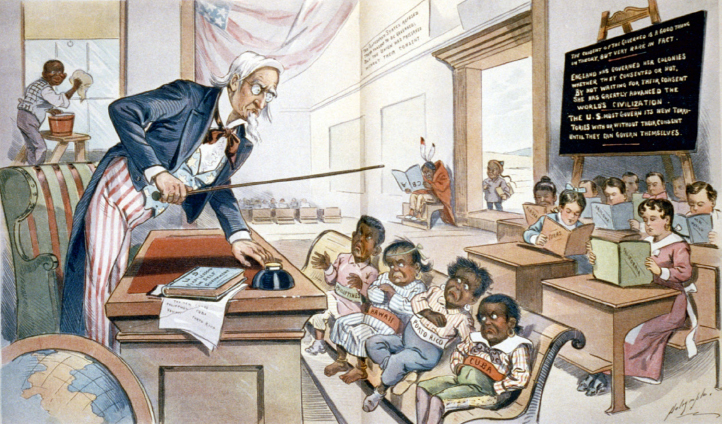Document 26.3
“English, the Common United States Language,” 1899
The racial dimensions of late-nineteenth-century American imperialism are on full display in this 1899 political cartoon. The United States’ most recent territorial acquisitions squirm in the front row of a classroom. A stern Uncle Sam tells them that if they study hard and behave themselves they can join the model students (reading books labeled with the names of American states) who sit behind them. An African American child, consigned to janitorial duty, and a Native American child, sitting in the corner and reading a book upside down, suggest the alternatives to compliance with Uncle Sam’s demands. An Asian child peeks through the doorway, indicating that American imperial expansion may not yet be complete. As you examine the cartoon, think about what it says about how many Americans, particularly whites, saw the Philippines. How did ideas of racial superiority help justify American occupation of former Spanish colonies?

(Uncle Sam teaches 4 infants, Philippines, Hawaii, Porto Rico, Cuba, while children read books labeled by states. 1899/Universal History Archive/UIG/The Bridgeman Art Library)
- Why did the cartoonist choose to depict the Philippines and the other newly acquired territories as infants? What was implied by this choice?
- What should we make of the inclusion of African American and Native American children in the cartoon? How might their inclusion have helped “explain” the relationship between the United States and the Philippines to a white American audience?
